In recent years, the energy and environmental crisis has accelerated the strict control of national governments on the energy consumption and emissions of products in the automotive industry. By 2020, the world's major automobile production and consumption countries and regions other than the United States will strictly limit the fuel consumption of passenger vehicles to 5L/100km, and carbon emissions will be more stringent (domestic in 2020). The national VI emission standards will be used).
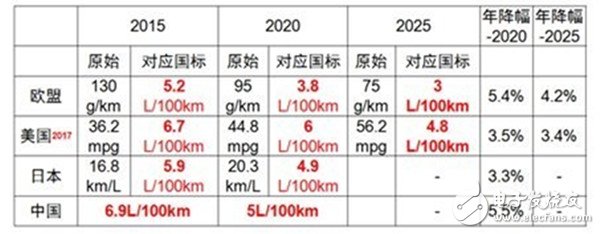
This has forced new energy vehicle technology and lightweight design of automobiles to become the two necessary ways to improve energy consumption. Regarding the development trend of new energy vehicle technology and the current mainstream technology interpretation, I have had a detailed interpretation in the articles of Fei Ling in the past two years. This article mainly wants to talk about the current lightweight technology of automobiles.
The path and development status of lightweight design
There are two main forms for the current realization of lightweight design of automobiles: one is to strengthen the main bearing components of the car body and rationally weaken the non-main bearing components through reasonable and precise design of the structure. Under the premise of satisfying the performance, the cross-section size of the force transmission channel should be minimized, and the material thickness of the material should be selected reasonably and refinely to realize the lightweight design of the structure. The other is to use a new material instead of ordinary steel to achieve lightweight design, such as aluminum alloy, GFRP (glass fiber reinforced plastic) and CFRP (carbon fiber) and other new materials to replace the steel to achieve lightweight design, such as A lightweight design is achieved by replacing the conventional high-strength steel with a higher-strength, thinner-thin thermoformed material (the thermoformed material is essentially steel) to reduce the number of reinforcing structural parts.
In actual car design, these two lightweight methods are often used in combination to maximize the lightweight design of the car body, while also promoting each other's development. For example, in the design of the structure of the side beam and B-pillar of the A-pillar of the body, the current mainstream design adopts the thermoforming material to replace the design of the ordinary high-strength steel. The use of the thermoforming material itself is a lightweight design of the material, but The use of thermoformed materials allows these body areas to reduce the design of the reinforcement structure. The use of thick thermoformed panels can even eliminate the original hinge reinforcement plate, stopper reinforcement plate and other structures. The refined structure design promotes the development of unequal thickness plates, laser tailor welded plates, and aluminum alloys.
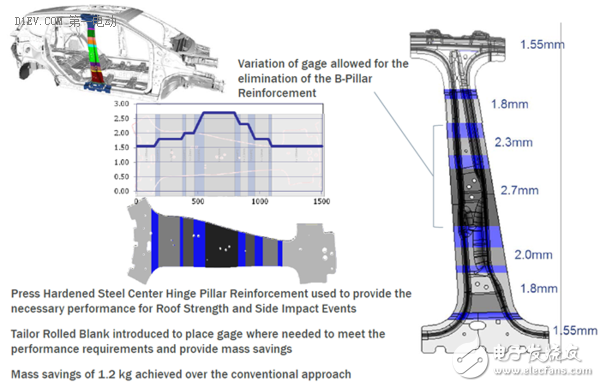
Unequal Thick Thermoform B-pillar Strengthening Plate of a US SUV Model
The lightweight design of the structure is different because of the different functions of the models, and the major OEMs have different factors for the setting of their own car performance targets. The design ideas will not be consistent, so I will not elaborate here. Moreover, the effect of lightweight construction is not as immediate as the lightweight of materials, and new models that require significant improvements in power performance, handling performance, and energy consumption are still relying on lightweight materials.
Due to the limitations of the overall industrial development level, OEM R&D strength, production conditions, product brand factors, etc., the current status of mainstream OEM lightweight design is that the structure is light and lightweight, and the materials are lightweight, but only a few first-class manufacturers. Hyun skills." This article is also mainly to talk to you about the current status of mainstream OEM materials lightweight.
Mainstream lightweight materials
Carbon fiber, aluminum alloy, magnesium alloy, engineering plastics and other materials with low density are commonly used in the industry to ensure the performance of the car body structure and to greatly reduce the weight of the car body. The use of these materials in the body structure, the lightweight effect is very obvious. Taking the Ford F150 of the aluminum alloy body as an example, the body has achieved more than 40% weight reduction and the finishing quality has been reduced by 300kg. The BMW i3, which is made of carbon fiber and aluminum alloy adhesion process, has more obvious weight reduction effect. As a pure electric vehicle, the quality of the whole is only 1195kg, which is about 150Kg lighter than the conventional model of the same size.

Here are a few questions about the aluminum body. The so-called all-aluminum body is actually an aluminum body instead of a pure aluminum body. Moreover, in the current mass-produced aluminum alloy body models, the mainstream is still a composite structure of aluminum alloy and steel: the A-pillar upper side beam, the B-pillar reinforcing plate, the door anti-collision beam, and the lower front plate of the front baffle of the cabin. Or the main bearing structure related to collision safety, such as the rear section of the front longitudinal beam, will still use thermoformed steel plates. For example, the BMW 7 Series and the Cadillac CT6 are all steel and aluminum composite bodies. At present, there is no complete aluminum alloy body in the industry. Even for Tesla, which is known as all-aluminum, the utilization rate of aluminum alloy is only 98%. Other composite materials are also used in the car body, such as the top cover of the non-sunroof version. A resin material or the like is used.
The proportion of aluminum alloy used in various systems in the car can be seen in the following figure. The main use is in the body and chassis system components:

Lightweight new materials for vehicles are expensive to use
At present, the cost of lightweight new materials for vehicles is generally high. At present, the cost per ton of cold-rolled automotive sheet for vehicles in China is between 5,000 and 9000, and the material cost per ton of aluminum alloy is as high as 45,000, and the material cost of carbon fiber. It is even higher, about 800,000 per ton, and because of its high molding waste rate, many medium and low-end models are even more discouraged in the use of carbon fiber. Therefore, the current price of aluminum alloy, carbon fiber and other new materials as the main structure of the car body is basically more than 400,000. The cast aluminum parts are earlier in the engine casing, suspension swing arm, sub-frame and other chassis and power system. The parts are used on the part, because the proportion of the development cost of the models is small, and the models of the models are different.
Comparison of new material data by F&S statistics
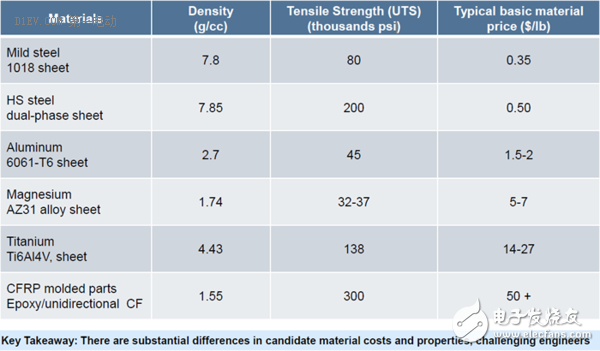
Note: The density, tensile strength and international price of ordinary strength steel, high strength steel, aluminum alloy, magnesium alloy, titanium alloy and carbon fiber
The use of new lightweight materials by OEMs will also involve the transformation of traditional production line equipment. In the four major processes, the stamping, welding and painting production lines basically need to face the substantial transformation or reconstruction of the station. The investment of hundreds of millions is still in the process. For the self-owned brand of the subsistence line, it is more than enough. Secondly, the supply chain of aluminum alloy, carbon fiber and other materials is also scarce in China. The suppliers of aluminum plates are only the factories in Jiangsu Nobelis and Tianjin Kobe, and only the Nobelis family can supply all the aluminum plates. At present, it mainly supplies high-end models such as Jaguar Land Rover. The main suppliers of carbon fiber are Japan's Toray and Teijin, which account for more than half of the world's total, but the most advanced carbon fiber processing technology is Germany.
Current status of the use of global mainstream OEM lightweight materials
For independent brands, due to the limitations of many external conditions, the lightweight design of self-owned brands is mainly based on the structural lightweight strategy, supplemented by the use of some thermoformed panels and unequal slabs. Therefore, the main components of the car body are basically steel. There are not many new materials in the main structural parts. It is also only the suspension arm of the high-end self-owned brand models, the body anti-collision beam, the engine hood, The engine block and other parts will be made of aluminum alloy, and the fuel fillering port will be made of engineering plastics, which has a low proportion.
In fact, from the above analysis, we can easily find that the material lightweight is mainly used in some high-end luxury models with less cost sensitivity and more sensitive to pure electric models. These models are mainly concentrated in the three countries of Germany, the United States, and Japan. Let's take a look at the proportion of lightweight materials in these car powers in the whole vehicle.
The first is Germany. On the one hand, Europe is becoming more stringent in terms of energy consumption and emissions policies. On the other hand, Germany is currently the country with the most luxury brand models. New materials and new technologies will also have a blessing effect on technology luxury. Therefore, the German car represented by ABB is more enthusiastic about the use of new materials, especially Audi is in the industry leading position in the aluminum alloy body and BMW in the carbon fiber body.
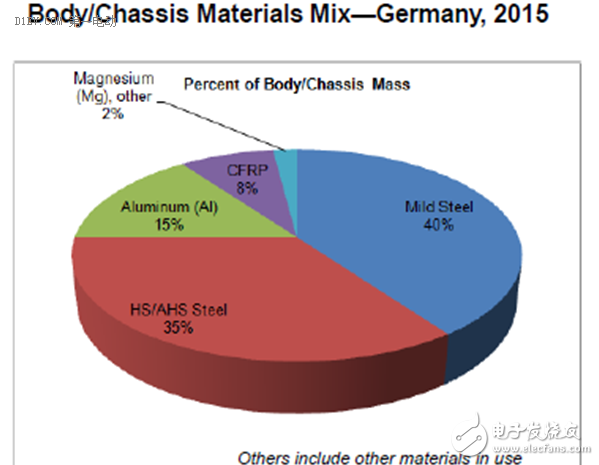
In 2015, Germany's new production of automotive aluminum alloys and other new materials accounted for 25% of the body and chassis. It is currently the world's highest proportion of automotive lightweight materials. By 2020, the use of new materials will continue to rise. It is about 34%.
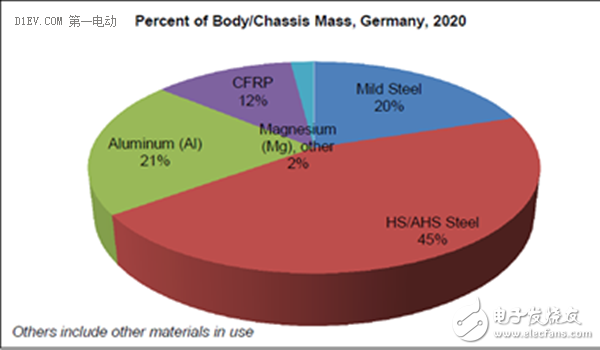
Secondly, the United States, although the United States has more high-end luxury brand models, but the US automotive industry's enthusiasm for new lightweight materials mainly comes from the development of new energy vehicles and the pressure of emissions and energy consumption. Representative companies are Tesla, GM, Ford and so on. Tesla's current Model S and Model X are basically made of aluminum alloy and other composite materials on the body and chassis, and GM's high-end brand Cadillac has also adopted steel-aluminum composite body structure in the new two-year models, such as Cadillac CT6, Ford is the first aluminum alloy body on the high-end pickup truck type F150.
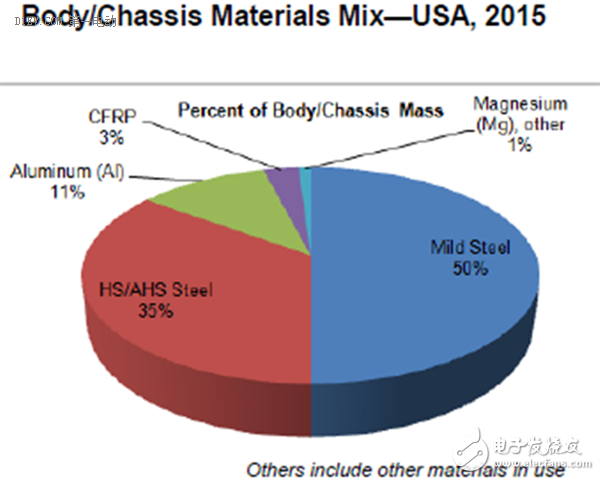
Affected by the environmental and energy crisis, the US government has introduced a number of preferential policies to encourage the development of new energy vehicles, and the company has also shown a high degree of enthusiasm, which makes the United States gradually in the leading position in the development and production of new energy vehicles worldwide. With the further development of this trend, the emission limit of new energy vehicles will be further increased by the strict restriction of emissions by 2020, and the proportion of new lightweight materials will be further increased, and this ratio may be from the current 15%. Increased to about 20%.

Japanese auto companies have always been the masters of lightweight construction, and they have always been very good players in the management of energy consumption, so auto companies do not have too obvious material lightweight power. In the research and development of new energy vehicles, Japan is mainly based on hybrid and hydrogen fuel cell power. Even pure electric vehicles are mainly k-car models. The light weight requirements are not as urgent as pure electric vehicles. At present, the proportion of lightweight materials used in Japanese auto companies is not high, only about 10%.
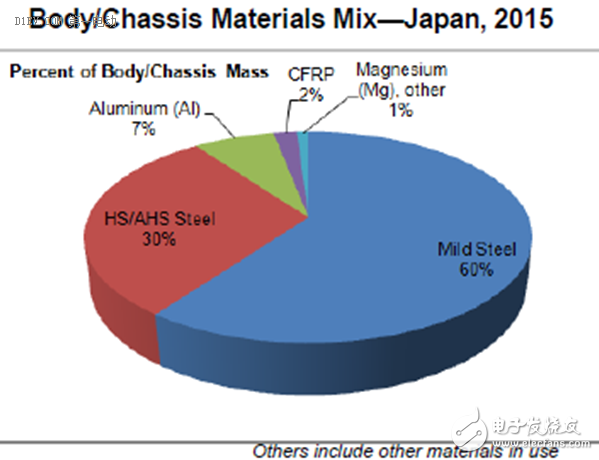
At present, the use of lightweight materials by Japanese auto companies is mainly concentrated on some non-structural parts, such as aluminum alloy hoods, plastic fenders and tailgates, as well as some cast aluminum parts for chassis and engine. . The representative companies are Toyota's Lexus and Honda Acura. Honda has already used the design of the departmental aluminum body on the Acura NSX body. Toyota has used aluminum alloy in the hood of the current NX series, and the tailgate uses engineering plastics, and it is planned to be in 2018. The Camry's replacement uses an aluminum body design.
With the rigorous global energy consumption and emission policies in 2020, Japanese companies have begun to increase their R&D investment in materials lightweighting. It is estimated that by 2020, the proportion of lightweight materials in Japanese chassis and chassis will be Catch up with the United States and reach around 20%.

Review
From the above analysis, the proportion of lightweight materials can be used to explain the industry level of automotive materials in the region, and also reflect the development level of new energy vehicles in the region. Moreover, from the current trend, with the further reduction of material costs, the development of aluminum alloy car body may usher in an explosion period in the next few years. By 2025, the production scale of aluminum alloy may reach four times the current level. the above.

At present, independent brands have not had much eye-catching achievements in the cruising range of pure electric vehicles. A large part of the reason is that they are limited by the development of automotive materials. Lightweight design is a necessary way for the development of new energy vehicles. With 2020 With the extreme energy consumption of automobiles in 2025, both enterprises and governments must increase their R&D investment in lightweight materials for automobiles.
Put the credit card , some small charge and Coin , it will save your space.Many card slots will give your enough capacity .We sell slim card wallet,business Card Holder,Credit Card Holder,RfID blocking card holder,wallet card holder,etc.

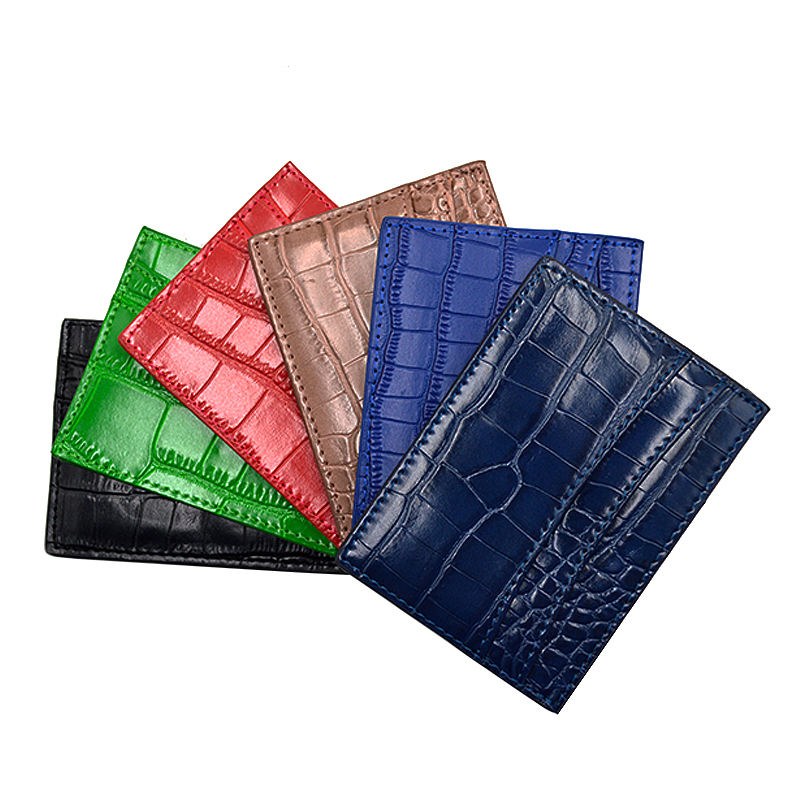
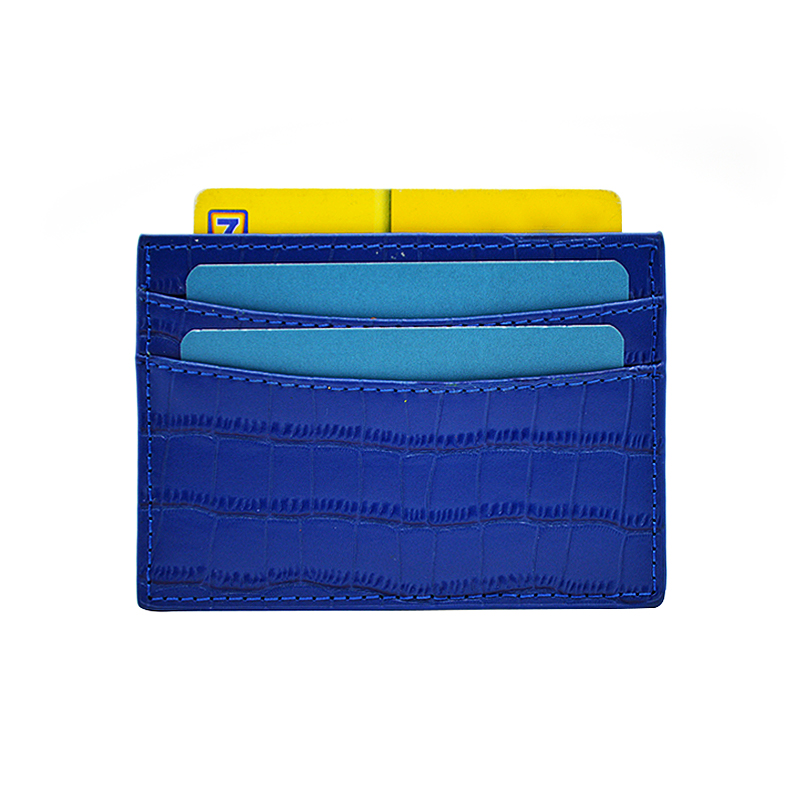
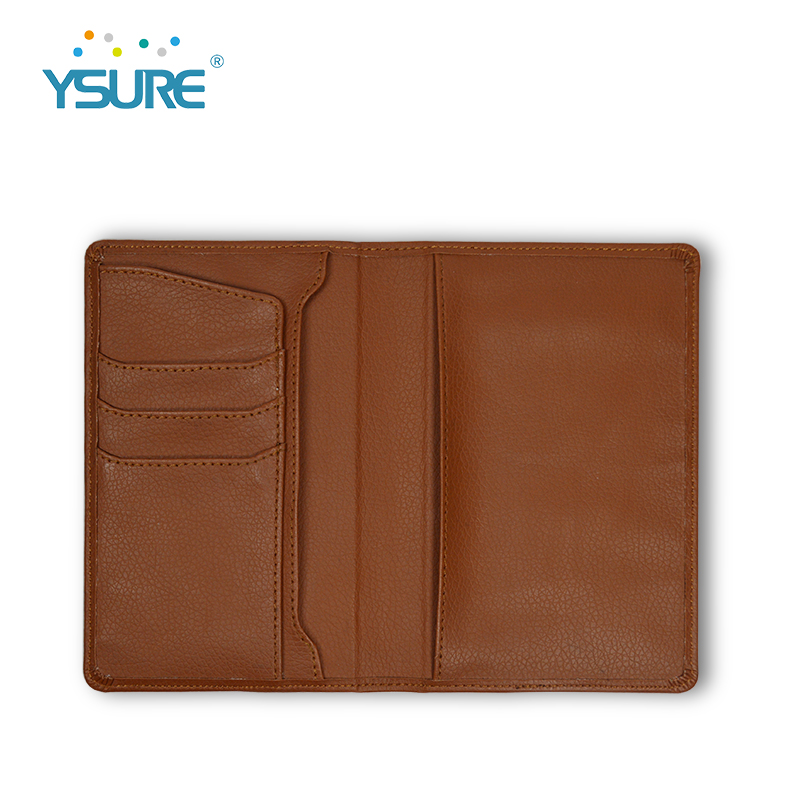
We employ the most creative designers and tech brilliant engineers to make the best cases. We believe our high-quality products with competitive prices will satisfy your needs.
The productive process :
Make the Products Mould –Cutting the fabric –Do the half products – Finish products – Cleaning –QC- Package – Shippment .
Card Wallet,Credit Card Wallet,Custom Wallet Card,Custom Card Holder
Guangzhou Ysure Electronic Technology Co., Ltd. , https://www.ysurecase.com